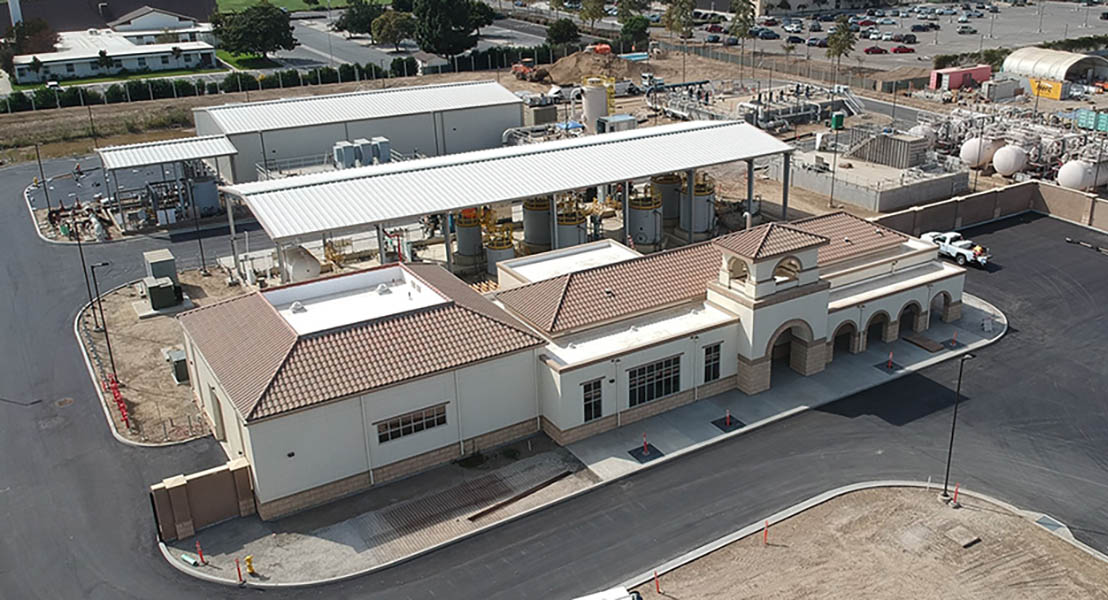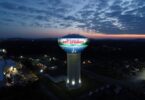The City of Camarillo has announced the start-up and commissioning of its North Pleasant Valley (NPV) Groundwater Desalter Plant, moving the city closer to a more self-reliant, affordable potable water future.
For nearly two decades, groundwater quality in the northern portion of the Pleasant Valley Groundwater Basin in Ventura County continuously declined due primarily to the infiltration of poor-quality surface water. These challenges compelled the city to reduce groundwater pumping and increase the blending of imported water with Wells A and B, two of Camarillo’s largest wells.
Thus, imported water made up 60% of Camarillo’s water supply. Local groundwater accounted for the remaining 40%.
New reverse osmosis facility to save water customers an estimated $43 million over the next 20 years
The new desalter plant doubles water supply production from local groundwater sources, reducing the dependence on imported water and saving customers an estimated $43 million over the next 20 years.
Under construction since the fall of 2019, the $66.3 million desalter project is an immediate water supply solution with many local and regional benefits as described by City’s Director of Public Works Dave Klotzle:
This once-in-a-generation project creates an affordable, drought-resistant potable water supply while serving an estimated 43,000 people within the City’s water service area. By removing salts from the Pleasant Valley Groundwater Basin and reducing basin degradation, the project helps preserve this natural resource in the region.
Designed by Brown and Caldwell and constructed by W.M. Lyles Co., the initial phase of the desalter plant can treat 4,500 acre-feet per year (AFY) of salty groundwater from the Calleguas Creek watershed. Treatment will yield up to 3,800 AFY of high-quality drinking water using greensand filtration and reverse osmosis (RO) technologies.
The greensand filters will remove naturally occurring iron and manganese. The RO water purification process uses a semi-permeable membrane to filter out unwanted, dissolved molecules, contaminants, and other parameters like chlorine and salt from drinking water. RO cleans water down to a molecular level, leaving only pure H2O behind.
The projected 11 million tons of salt removed from the watershed annually will be sent to the Pacific Ocean via an existing ocean outfall, helping state, federal, and local stakeholders meet regulations to protect the watershed’s long-term health. Furthermore, reducing water imports will enhance the Bay-Delta ecosystem through reduced diversions and increase habitat for endangered species.
New infrastructure associated with the desalter project includes nine monitoring wells at three locations, connection to Calleguas Municipal Water District’s Salinity Management Pipeline, and conveyance pipelines to connect the refurbished Wells A and B to the treatment site and transport treated water to the City’s system.
Forming the design project team, Separation Processes, Inc. brought leading RO design, and Platt/Whitelaw Architects provided sustainable facility architectural design and energy efficiency expertise.
“This is a landmark moment for Camarillo’s long-term water future,” said Brown and Caldwell Project Manager Andrew Lazenby. “We applaud the City’s visionary approach to reclaiming and reusing groundwater and doing so in a way that is both cost-effective for customers and beneficial to the environment.”
The NPV Groundwater Desalter Plant has been configured to include educational elements, including tours, informational signage, and learning opportunities for students and the public.
Do you have an article or video that you would like to share? Submit your article here or keep up with the latest news from the water industry and wastewater industry by subscribing to our weekly newsletter.







